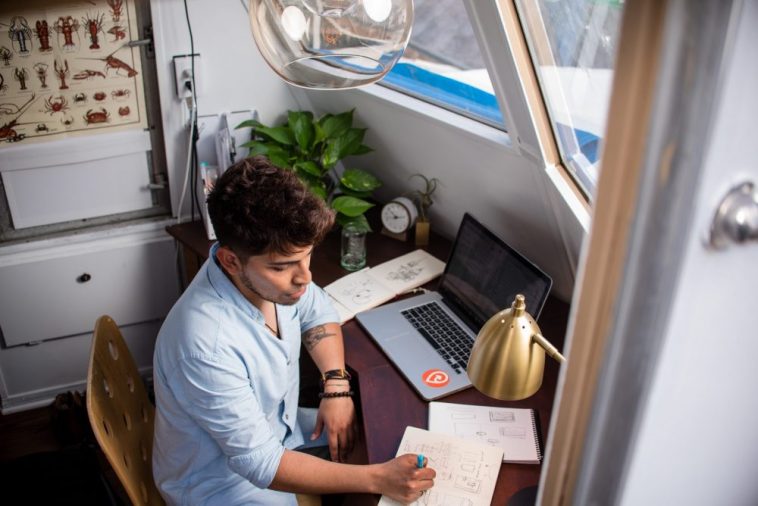Introduction.
Let me be honest: if you want to stay ahead in 2025 and beyond, there’s one skill you can’t ignore—critical thinking. It’s the one thing that AI can’t replicate (not well, anyway), and it’s showing up in more job descriptions than ever before.
A report by the World Economic Forum ranks it as one of the top skills needed for the future of work, right next to problem-solving and creativity.
Think about it. With all the information we scroll through every day, how do you figure out what’s true and what’s nonsense?
How do you make good decisions fast? How do you solve problems when you don’t have all the answers? That’s where critical thinking comes in.
And the best part? You don’t need to go back to school, buy expensive courses, or spend hours each day.
You can start building this skill right now in just 30 minutes a day—right from your phone, your kitchen table, or even your morning commute.
Let me show you how.
What Is Critical Thinking?
It’s not about overthinking or trying to sound smart. Critical thinking is just a fancy way of saying: you can look at a situation, ask the right questions, and make good choices.
It means:
Thinking clearly without getting pulled into emotional drama
Questioning what you read or hear, instead of taking it at face value
Solving real problems using logic, facts, and a bit of creativity
Knowing when to speak up—and when to listen
It’s useful at work, at home, with family, with friends—literally everywhere.
Why It’s the #1 Skill in 2025
The world’s not slowing down. New tech is changing how we live and work. AI is writing emails, coding apps, even designing websites. But one thing it can’t do well? Think critically like a human.
According to LinkedIn’s 2024 Workplace Learning Report, 64% of learning and development leaders are focusing on soft skills, with critical thinking topping the list.
Another stat? Jobs that require critical thinking pay up to $15,000 more per year on average compared to roles that don’t emphasize it. Here’s the full report if you’re curious.
Employers love it. Teams work better when people can solve problems without waiting for a manager. And honestly, your life gets easier too—when you stop making the same old mistakes and start spotting better options.
How Do I Build It in 30 Minutes a Day?
You don’t need a PhD. You don’t need to read long textbooks. What you need is a daily habit that fits into your life. Here’s how I do it—and how you can too.
1. Ask Better Questions (5 minutes)
Start your day with one good question. Something simple like:
What’s the real problem here?
What’s another way to look at this?
What would I tell a friend to do?
Write it down. Think about it while you make coffee or walk the dog.
The goal is to train your brain to pause before reacting. Over time, that tiny shift changes everything.
2. Read Smarter, Not More (10 minutes)
Every day, pick one article or podcast episode on a real-world topic—something outside your bubble. Could be news, science, health, tech, whatever.
But here’s the trick: question it as you read.
Who’s saying this?
What’s their angle?
What’s missing?
You’re not just consuming info—you’re learning to process it. I like using Pocket or Readwise to save articles and reflect on them later.
3. Play With Problems (10 minutes)
This is the fun part. Use puzzles, games, or real-life challenges to stretch your brain. Sudoku, logic apps, or brain-training games like Lumosity are solid choices. Even debating with a friend (nicely!) counts.
If you’re working, try this: take a small issue you’re stuck on, and list three ways to solve it—even if they sound silly. This builds mental flexibility and helps you practice thinking differently.
4. Reflect & Review (5 minutes)
End your day with one question:
“What’s one thing I learned today that changed how I think?”
You’ll be shocked how much your mindset shifts when you reflect on your choices.
FAQs
Is critical thinking just for people in leadership or tech roles?
Not at all. It’s useful in every job—from teachers and nurses to artists and parents. If you work with people, solve problems, or make decisions (aka everyone), this skill helps.
What if I only have 10–15 minutes some days?
That’s fine. The 30-minute plan is flexible. Do what you can. Even 5 intentional minutes a day is better than nothing.
Can I teach this to my kids or team?
Absolutely. These habits work for anyone, any age. In fact, the earlier you start, the better.
Free Tools To Help You Practice
Here are a few I’ve used and trust:
Critical Thinking Mini-Guide by Foundation for Critical Thinking
Skillshare has short, high-quality courses on mental clarity and critical thinking
MindTools – simple guides and exercises
How I Make It a Habit (My Personal Routine)
Here’s how I fit it into my day:
Morning (5–10 min): I read a thought-provoking quote or article
Lunch break (10–15 min): I challenge myself with a problem, puzzle, or quick journaling prompt
Evening (5 min): I reflect in my notes app—just one sentence
No pressure. No perfection. Just a bit of practice, every day. Like going to the gym, but for your brain.
Final Thoughts
If you’re looking for a real edge in your career—or just want to feel more confident in your decisions—critical thinking is the best investment you can make in yourself.
You don’t need a special background, and you definitely don’t need hours of free time. Just a few small, consistent steps each day can help you stay sharp, think clearly, and handle life’s curveballs without losing your cool.
So, what would your life look like if you got 1% better at thinking every single day?





GIPHY App Key not set. Please check settings